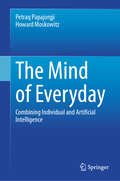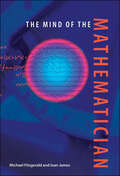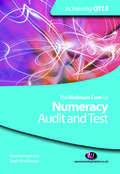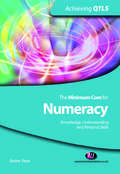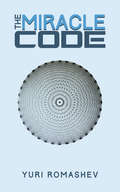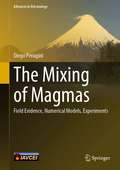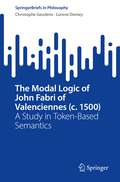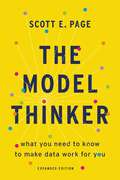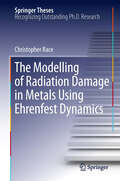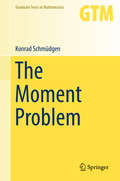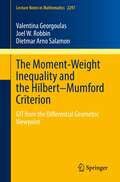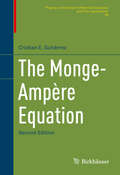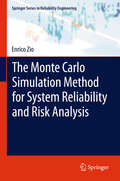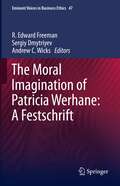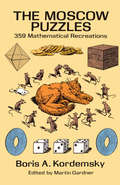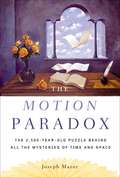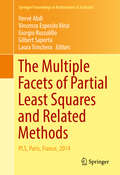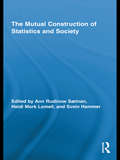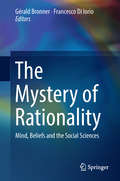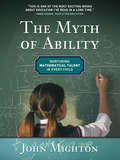- Table View
- List View
The Mind of Everyday: Combining Individual and Artificial Intelligence
by Petraq Papajorgji Howard MoskowitzThe advent of artificial intelligence (AI) is associated with relevant changes in how we live today. AI has the potential to significantly enhance daily decision-making by providing tailored, data-dependent insights and aiding in intricate analysis. AI-based systems will be around us, helping and advising us in our everyday tasks. However, how well do these systems perform in their quest to "replace" the human brain? A "meter," a procedure for comparing the outcomes obtained by artificial intelligence systems with those obtained by human systems, is necessary to address this issue. This "meter" is Mind Genomics, a new emerging science that delves into the science of how we, as humans, organize and respond to information. To evaluate whether there are differences in the results obtained by AI-based systems and human-based experiments based on 'Outer Psychophysics' were designed and implemented. Thus, four experiments in crucial areas of our lives are selected and cover education, family stress, and environmental and governmental policies. For each area, a Mind Genomic experiment is designed, defining four topics (silos). Then, the elements contained in each of the silos were generated twice, once by humans and then by an AI-based system. Evaluating both systems' performance requires comparing the results obtained by both experiments. The analysis of the study cases is disciplined, rich in scientific tools, and presented with methods. Through a blend of theoretical exploration, case studies, and practical applications, this book aims to inspire readers with the potential of the fusion of Mind Genomics and AI to empower innovation, enhance user experiences, and bring forth a more nuanced understanding of human thought. Whether the reader is a student, a researcher in the field of social and political sciences, or simply curious about the evolving landscape of science and technology, we hope this book will serve as an invitation to explore how we can harmonize human and machine intelligence to better navigate the complex world around us.
The Mind of the Mathematician
by Michael Fitzgerald Ioan JamesWhat makes mathematicians tick? How do their minds process formulas and concepts that, for most of the rest of the world’s population, remain mysterious and beyond comprehension? Is there a connection between mathematical creativity and mental illness?In The Mind of the Mathematician, internationally famous mathematician Ioan James and accomplished psychiatrist Michael Fitzgerald look at the complex world of mathematics and the mind. Together they explore the behavior and personality traits that tend to fit the profile of a mathematician. They discuss mathematics and the arts, savants, gender and mathematical ability, and the impact of autism, personality disorders, and mood disorders. These topics, together with a succinct analysis of some of the great mathematical personalities of the past three centuries, combine to form an eclectic and fascinating blend of story and scientific inquiry.
The Mind of the Mathematician
by Michael Fitzgerald Ioan JamesAn intriguing look at the psychology and personality of mathematicians, with profiles of twenty prominent figures in the field. What makes mathematicians tick? How do their minds process formulas and concepts that, for most of the rest of the world&’s population, remain mysterious and beyond comprehension? Is there a connection between mathematical creativity and mental illness? In The Mind of the Mathematician, internationally famous mathematician Ioan James and accomplished psychiatrist Michael Fitzgerald look at the complex world of mathematics and the mind. Together they explore the behavior and personality traits that tend to fit the profile of a mathematician. They discuss mathematics and the arts, savants, gender and mathematical ability, and the impact of autism, personality disorders, and mood disorders. These topics, together with a succinct analysis of some of the great mathematical personalities of the past three centuries, combine to form an eclectic and fascinating blend of story and scientific inquiry. &“The authors&’ careful treatments are an especially welcome addition to a genre riddled with apocryphal anecdotes and shoddy scholarship.&” —Nature
The Minimum Core for Numeracy: Audit And Test (Achieving QTLS Series)
by Mark Patmore Sarah WoodhouseThis book supports trainee teachers in the Lifelong Learning Sector in the assessment of their numeracy knowledge. A self-audit section is included to help trainees understand their level of competence and confidence in numeracy and will help them identify any gaps in their knowledge and skills. This is followed by exercises and activities to support and enhance learning. The book covers all the content of the LLUK standards for the minimum core for numeracy. Coverage and assessment of the minimum core have to be embedded in all Certificate and Diploma courses leading to QTLS and ATLS status.
The Minimum Core for Numeracy: Knowledge, Understanding And Personal Skills (Achieving QTLS Series)
by Sheine PeartThe teacher training framework, introduced in September 2007, requires all teachers in the post-16 sector to possess knowledge, understanding and personal skills to at least level 2 in the minimum core for numeracy. Coverage and assessment of the core have to be embedded in all Certificate and Diploma courses leading to QTLS and ATLS status. This book is a practical guide to numeracy for trainee teachers in the Lifelong Learning sector. It enables trainee teachers to identify and develop their own numeracy skills and also to support their students′ numeracy.
The Miracle Code
by Yuri RomashevWhat were the creators of roulette trying to conceal? What exactly is a symmetric division of space? Did the game of roulette originate with the Mayas? What is perhaps the invisible material that unites the universe? Three interesting discoveries are described in this book, the secret of the game of roulette, the mystical attraction between numbers and the hidden formula of the Maya calendar (Tzolkin of 260 days). This is why the Miracle Code is not just a way to enhance your winnings at the casino from the official 2.7% to more than 20%. The attraction between numbers might well be the basis for the division of energy in space. Is man just one component of a comprehensive programme that has constantly repeated itself throughout history? No other publication has focused on this information and that makes this book so unique.
The Mixing of Magmas: Field Evidence, Numerical Models, Experiments (Advances in Volcanology)
by Diego PeruginiThis book provides a common theoretical and practical basis to the multifaceted nature of magma mixing. This process represents a fundamental phenomenon both in the evolution of igneous rocks and in triggering explosive volcanic eruptions. The topic is attacked surgically merging field evidence, numerical models, and experiments in order to draw the most complete picture about this natural process. Arguments are discussed in the light of Chaos Theory and Fractal Geometry as new tools to understand the role of magma mixing as a fundamental petrological and volcanological process. The book is intended to be a source of information and a stimulus for new ideas in students, young and possibly more experienced researches.
The Modal Logic of John Fabri of Valenciennes: A Study in Token-Based Semantics (SpringerBriefs in Philosophy)
by Christophe Geudens Lorenz DemeyThe first book-length study to address issues in modal logic at the eve of the Renaissance, this monograph provides important new insights into the way the debates on modal logic during the post-medieval period tied in with the so-called Wegestreit, the divide between the via antiqua and via moderna that dominated the discourse on logic during the 15th and early 16th centuries. The focus of the book is on the logic and philosophy of language of John Fabri of Valenciennes (fl. c. 1500), one of the last exponents of the terminist approach to logic that was bitterly criticized by the humanist movement. By means of a careful reconstruction of Fabri’s text, the book argues that Fabri's modal logic ultimately goes back to the work of John Buridan, and represents the same approach to the topic as the modal logics that were developed by adherents of the via moderna in Paris. This has significant implications for the historiography of post-medieval philosophy. Fabri was active in Louvain, which until the late 16th century was the most important intellectual center in the Low Countries. According to a long-standing tradition in the scholarship, Louvain was one of the few bulwarks of via antiqua logic on the map of post-medieval Europe. The book argues that this thesis is at least in part a scholarly fiction, and thus in need of revision. By shedding light on an author whose thought has thus far remained entirely unstudied, it also constitutes a valuable step towards a history of philosophy without any gaps. The book is aimed at graduate students and researchers in the history of logic and philosophy, but will also be of interest to intellectual historians, historians of ideas, and to any contemporary modal logician who is interested in the historical roots of their discipline.
The Model Thinker: What You Need to Know to Make Data Work for You
by Scott E. PageHow anyone can become a data ninja From the stock market to genomics laboratories, census figures to marketing email blasts, we are awash with data. But as anyone who has ever opened up a spreadsheet packed with seemingly infinite lines of data knows, numbers aren't enough: we need to know how to make those numbers talk. In The Model Thinker, social scientist Scott E. Page shows us the mathematical, statistical, and computational models--from linear regression to random walks and far beyond--that can turn anyone into a genius. At the core of the book is Page's "many-model paradigm," which shows the reader how to apply multiple models to organize the data, leading to wiser choices, more accurate predictions, and more robust designs. The Model Thinker provides a toolkit for business people, students, scientists, pollsters, and bloggers to make them better, clearer thinkers, able to leverage data and information to their advantage.
The Modelling of Radiation Damage in Metals Using Ehrenfest Dynamics
by Christopher RaceAtomistic simulations of metals under irradiation are indispensable for understanding damage processes at time- and length-scales beyond the reach of experiment. Previously, such simulations have largely ignored the effect of electronic excitations on the atomic dynamics, even though energy exchange between atoms and electrons can have significant effects on the extent and nature of radiation damage. This thesis presents the results of time-dependent tight-binding simulations of radiation damage, in which the evolution of a coupled system of energetic classical ions and quantum mechanical electrons is correctly described. The effects of electronic excitations in collision cascades and ion channeling are explored and a new model is presented, which makes possible the accurate reproduction of non-adiabatic electronic forces in large-scale classical molecular dynamics simulations of metals.
The Moment Problem
by Konrad SchmüdgenThis advanced textbook provides a comprehensive and unified account of the moment problem. It covers the classical one-dimensional theory and its multidimensional generalization, including modern methods and recent developments. In both the one-dimensional and multidimensional cases, the full and truncated moment problems are carefully treated separately. Fundamental concepts, results and methods are developed in detail and accompanied by numerous examples and exercises. Particular attention is given to powerful modern techniques such as real algebraic geometry and Hilbert space operators. A wide range of important aspects are covered, including the Nevanlinna parametrization for indeterminate moment problems, canonical and principal measures for truncated moment problems, the interplay between Positivstellensätze and moment problems on semi-algebraic sets, the fibre theorem, multidimensional determinacy theory, operator-theoretic approaches, and the existence theory and important special topics of multidimensional truncated moment problems. The Moment Problem will be particularly useful to graduate students and researchers working on moment problems, functional analysis, complex analysis, harmonic analysis, real algebraic geometry, polynomial optimization, or systems theory. With notes providing useful background information and exercises of varying difficulty illustrating the theory, this book will also serve as a reference on the subject and can be used for self-study.
The Moment-Weight Inequality and the Hilbert–Mumford Criterion: GIT from the Differential Geometric Viewpoint (Lecture Notes in Mathematics #2297)
by Joel W. Robbin Valentina Georgoulas Dietmar Arno SalamonThis book provides an introduction to geometric invariant theory from a differential geometric viewpoint. It is inspired by certain infinite-dimensional analogues of geometric invariant theory that arise naturally in several different areas of geometry. The central ingredients are the moment-weight inequality relating the Mumford numerical invariants to the norm of the moment map, the negative gradient flow of the moment map squared, and the Kempf--Ness function. The exposition is essentially self-contained, except for an appeal to the Lojasiewicz gradient inequality. A broad variety of examples illustrate the theory, and five appendices cover essential topics that go beyond the basic concepts of differential geometry. The comprehensive bibliography will be a valuable resource for researchers.The book is addressed to graduate students and researchers interested in geometric invariant theory and related subjects. It will be easily accessible to readers with a basic understanding of differential geometry and does not require any knowledge of algebraic geometry.
The Monge-Ampère Equation
by Cristian E. GutiérrezThis updated and revised monograph continues to follow the latest advances in the study of the Monge-Ampère equation and its applications. These advances are reflected in an essentially self-contained systematic exposition of the theory of weak solutions, including recent regularity results by L. A. Caffarelli. This volume can be used for a graduate level topics course in differential equations, and features bibliographic notes at the end of each chapter for further exploration. Additions to the second edition include: A new proof of the theorem that viscosity solutions are Aleksandrov solutions without using deep regularity results A new chapter on the Harnack inequality for the linearized Monge-Ampère equation. A new chapter on interior Hölder estimates for second derivatives Note sections expanded to include new developments since 2001
The Monte Carlo Simulation Method for System Reliability and Risk Analysis
by Enrico ZioMonte Carlo simulation is one of the best tools for performing realistic analysis of complex systems as it allows most of the limiting assumptions on system behavior to be relaxed. The Monte Carlo Simulation Method for System Reliability and Risk Analysis comprehensively illustrates the Monte Carlo simulation method and its application to reliability and system engineering. Readers are given a sound understanding of the fundamentals of Monte Carlo sampling and simulation and its application for realistic system modeling. Whilst many of the topics rely on a high-level understanding of calculus, probability and statistics, simple academic examples will be provided in support to the explanation of the theoretical foundations to facilitate comprehension of the subject matter. Case studies will be introduced to provide the practical value of the most advanced techniques. This detailed approach makes The Monte Carlo Simulation Method for System Reliability and Risk Analysis a key reference for senior undergraduate and graduate students as well as researchers and practitioners. It provides a powerful tool for all those involved in system analysis for reliability, maintenance and risk evaluations.
The Montessori Method: My First Book of Numbers
by The Montessori MethodLearn about numbers the Montessori way with this line of board books following the world-leading educational approach, THE MONTESSORI METHOD!Montessori education values the development of the whole child-physically, socially, emotionally, cognitively. These books tap into the Montessori Method at home, allowing children to discover and engage with concepts in a holistic way that promotes a drive for knowledge and self-motivation. In NUMBERS, children are invited to imagine, touch, mimic, and learn about numbers and how they function in the world around us. Infused with humor and math concepts that both engage and challenge children, this book is sure to inspire a generation of mathematicians!Learn more with THE MONTESSORI METHOD: FEELINGS!
The Moral Imagination of Patricia Werhane: A Festschrift (Issues in Business Ethics #47)
by R. Edward Freeman Andrew C. Wicks Sergiy DmytriyevThis book celebrates the work of Patricia Werhane, an iconic figure in business ethics. This festschrift is a collection of articles that build on Werhane’s contributions to business ethics in such areas as Employee Rights, the Legacy of Adam Smith, Moral Imagination, Women in Business, the development of the field of business ethics, and her contributions to such fields as Health Care, Education, Teaching, and Philosophy.All papers are new contributions to the management literature written by well-known business ethicists, such as Norman Bowie, Richard De George, Ronald Duska, Edwin Hartman, Michael Hoffman, Mollie Painter-Morland, Mark Schwartz, Andrew Wicks, and others. The volume is comprised of articles that reflect on Werhane’s work as well as build on it as a way to advance further research. At the end of the festschrift, Pat Werhane provides responses to each chapter. The first chapter of the book also includes the overview of Patricia Werhane’s work and her academic career.The book is written to appeal to management scholars and graduate students interested in the areas of Business Ethics, Modern Capitalism, and Human Rights. Patricia Werhane is one of the most distinguished figures in the field of business ethics. She was a founder of the field, she is one of its leading scholars, and she has had a profound impact on the world of business practice. Among her many accomplishments, Pat is known for her original work on moral imagination, she is an acclaimed authority on employee rights in the workplace, and she is one of the leading scholars on Adam Smith. Having been active in Academia for over 50 years, Werhane is a prolific author of over a hundred articles and book chapters, and the author or editor of twenty-seven books, including Adam Smith and his Legacy for Modern Capitalism, Moral Imagination and Management Decision-Making, and co-authored books Organization Ethics in Health Care, Alleviating Poverty Through Profitable Partnerships, Obstacles to Ethical Decision-Making, Corporate Responsibility: The American Experience, and Research Approaches to Business Ethics and Corporate Responsibility.
The Moscow Puzzles: 359 Mathematical Recreations (Dover Recreational Math)
by Boris A. KordemskyThis is, quite simply, the best and most popular puzzle book ever published in the Soviet Union. Since its first appearance in 1956 there have been eight editions as well as translations from the original Russian into Ukrainian, Estonian, Lettish, and Lithuanian. Almost a million copies of the Russian version alone have been sold.Part of the reason for the book's success is its marvelously varied assortment of brainteasers ranging from simple "catch" riddles to difficult problems (none, however, requiring advanced mathematics). Many of the puzzles will be new to Western readers, while some familiar problems have been clothed in new forms. Often the puzzles are presented in the form of charming stories that provide non-Russian readers with valuable insights into contemporary Russian life and customs. In addition, Martin Gardner, former editor of the Mathematical Games Department, Scientific American, has clarified and simplified the book to make it as easy as possible for an English-reading public to understand and enjoy. He has been careful, moreover, to retain nearly all the freshness, warmth, and humor of the original.Lavishly illustrated with over 400 clear diagrams and amusing sketches, this inexpensive edition of the first English translation will offer weeks or even months of stimulating entertainment. It belongs in the library of every puzzlist or lover of recreational mathematics.
The Motion Paradox
by Joseph MazurThe epic tale of an ancient, unsolved puzzle and how it relates to all scientific attempts to explain the basic structure of the universe At the dawn of science the ancient Greek philosopher Zeno formulated his paradox of motion, and amazingly, it is still on the cutting edge of all investigations into the fabric of reality. Zeno used logic to argue that motion is impossible, and at the heart of his maddening puzzle is the nature of space and time. Is space-time continuous or broken up like a string of beads? Over the past two millennia, many of our greatest minds-including Aristotle, Galileo, Newton, Einstein, Stephen Hawking, and other current theoreticians-have been gripped by the mystery this puzzle represents. Joseph Mazur, acclaimed author of Euclid in the Rainforest, shows how historic breakthroughs in our understanding of motion shed light on Zeno's paradox. The orbits of the planets were explained, the laws of motion were revealed, the theory of relativity was discovered-but the basic structure of time and space remained elusive. In the tradition of Fermat's Enigma and Zero, The Motion Paradox is a lively history of this apparently simple puzzle whose solution-if indeed it can be solved-will reveal nothing less than the fundamental nature of reality.
The Multiple Facets of Partial Least Squares and Related Methods
by Vincenzo Esposito Vinzi Giorgio Russolillo Laura Trinchera Hervé Abdi Gilbert SaportaThis volume presents state of the art theories, new developments, and important applications of Partial Least Square (PLS) methods. The text begins with the invited communications of current leaders in the field who cover the history of PLS, an overview of methodological issues, and recent advances in regression and multi-block approaches. The rest of the volume comprises selected, reviewed contributions from the 8th International Conference on Partial Least Squares and Related Methods held in Paris, France, on 26-28 May, 2014. They are organized in four coherent sections: 1) new developments in genomics and brain imaging, 2) new and alternative methods for multi-table and path analysis, 3) advances in partial least square regression (PLSR), and 4) partial least square path modeling (PLS-PM) breakthroughs and applications. PLS methods are very versatile methods that are now used in areas as diverse as engineering, life science, sociology, psychology, brain imaging, genomics, and business among both academics and practitioners. The selected chapters here highlight this diversity with applied examples as well as the most recent advances.
The Music of Pythagoras: How an Ancient Brotherhood Cracked the Code of the Universe and Lit the Path from Antiquity to Outer Space
by Kitty FergusonFerguson, a musician and author of several books on the history of science, presents an entertaining, erudite history of the work of Pythagoras, from its murky origins in the sixth century B.C.E. to the present. She explores the use of Pythagorean mathematics in Greek, Roman, Arabic and Western European intellectual tradition in a clear, unbiased manner, with many diagrams and explanations to aid those for who haven't kept up their high school math.
The Mutual Construction of Statistics and Society (Routledge Advances in Research Methods)
by Ann Rudinow SætnanStatistics are often seen as simple, straightforward, and objective descriptions of society. However, what we choose to count, what we choose not to count, who does the counting, and the categories and values we choose to apply when counting, matter. This volume addresses the ways in which statistics and numbers are gathered and applied in social science research. The contributors argue that we must become more aware of the power and the limitations of statistics. Learning statistics needs to be about more than simply mastering the techniques of using the tool; it needs to also be about learning the dangers of that tool and learning to control it within social and ethical bounds. These dangers lie in the routines through which statistics are applied; the discourses from which they emerge and into which they are deployed; the power relations created by those discourses; and the assumptions, meanings, and categories statistics carry with them in those discourses. This volume will be necessary reading for students and scholars using quantitative data within the social sciences.
The Mystery of Rationality: Mind, Beliefs and the Social Sciences (Lecture Notes in Morphogenesis)
by Gérald Bronner Francesco Di IorioThis book contributes to the developing dialogue between cognitive science and social sciences. It focuses on a central issue in both fields, i.e. the nature and the limitations of the rationality of beliefs and action. The development of cognitive science is one of the most important and fascinating intellectual advances of recent decades, and social scientists are paying increasing attention to the findings of this new branch of science that forces us to consider many classical issues related to epistemology and philosophy of action in a new light. Analysis of the concept of rationality is a leitmotiv in the history of the social sciences and has involved endless disputes. Since it is difficult to give a precise definition of this concept, and there is a lack of agreement about its meaning, it is possible to say that there is a ‘mystery of rationality’. What is it to be rational? Is rationality merely instrumental or does it also involve the endorsement of values, i.e. the choice of goals? Should we consider rationality to be a normative principle or a descriptive one? Can rationality be only Cartesian or can it also be argumentative? Is rationality a conscious skill or a partly tacit one? This book, which has been written by an outstanding collection of authors, including both philosophers and social scientists, tries to make a useful contribution to the debates on these problems and shed some light on the mystery of rationality. The target audience primarily comprises researchers and experts in the field.
The Mystery of the Aleph
by Amir D. AczelThe history of infinity emphasizing the people who were interested in the concept. Stresses philosophical and religious importance of mathematical ideas throughout history. Fascinating even if math is not your strong suit.
The Mystery of the Ultimatum Game: Why We Are Predictably Irrational
by Kayoko KobayashiThis ambitious book is the first to present a theoretical framework for a unified analysis of both behavioral and traditional economics. It explores the ultimate factors from an evolutionary perspective in addressing why humans are predictably irrational and proposes "adaptive rationality," a new direction for understanding human behavior. Taking anomalies in ultimatum game experiments as a starting point, this book presents findings from hundreds of experiments. The interdisciplinary nature of the book, which encompasses the latest research across an astonishingly wide range of fields—including game theory, psychology, neuroscience, cognitive science, cultural anthropology, biology, and ethology—provides boundless intellectual excitement. While this is an academic book discussing human rationality, it can also be seen as a popular science book that delves deeply into questions such as "What underlies human decision making?" The book stands out for its unique approach, making it an unparalleled reading experience. The original Japanese edition won the Nikkei Prize for Economics Books (the 64th Nikkei-Keizai Tosho Bunka award) in 2021, an accolade bestowed upon an outstanding economics book published in a given year. Furthermore, this edition also received the Takashima Kunio Jiyu Prize Encouragement Award in 2024.
The Myth of Ability: Nurturing Mathematical Talent in Every Child
by John MightonJohn Mighton’s revolutionary bestselling guide to how every child can learn math through his groundbreaking JUMP program.A student in a remedial class who couldn't count by twos is now in an academic program a year ahead of her grade level. An entire Grade 3 class, including so-called slow learners, scores over 90% on a Grade 6-7 math test. These are just two of mathematician John Mighton's many success stories since he started JUMP (Junior Undiscovered Math Prodigies), a not-for-profit organization providing free math tutoring for elementary-level students from low income homes.In The Myth of Ability John Mighton tells JUMP's fascinating story and explains its teaching method with lots of simple examples.
